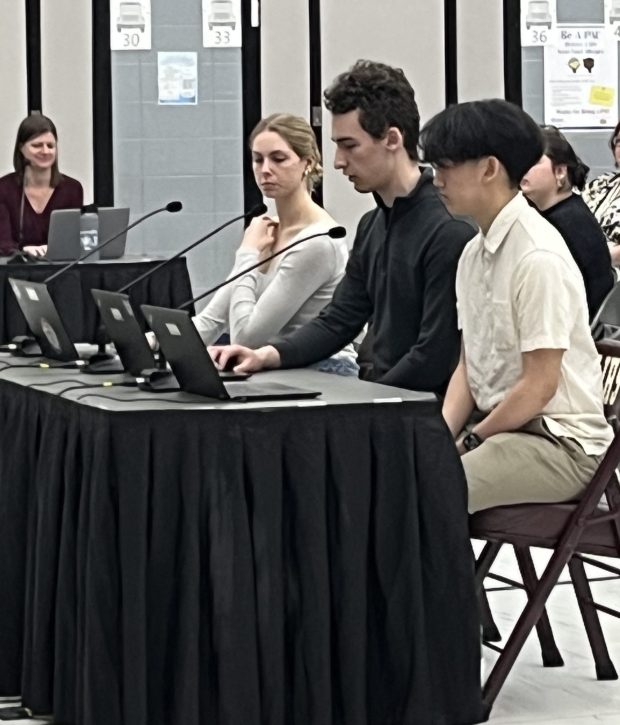The Naperville District 203 School Board will vote on a carbon action plan later this month that would significantly cut its greenhouse gas emissions in the next 10 years and reach net-zero greenhouse gas emissions by 2050.
Developed by environmental consultant Keramida Inc. in partnership with a committee of district staff and students, the plan was presented to the board Monday by several environmentally-conscious students from Naperville Central and Naperville North high schools.
If adopted, it will guide district decisions for the next 25 years, said Chuck Freundt, assistant superintendent for leadership and school services.
“Developing this plan has been an important first step in doing our part in building a sustainable future for Naperville 203,” Freundt said. “We know this plan is a roadmap that will likely take turns that we can’t foresee at the present time. However, having a plan is a significant step in taking deliberate action to improve our community and steward resources effectively to support student learning.”
Student involvement is a key to the plan’s success, officials said. School board members noted that student engagement was explicitly written into the district’s contract with Keramida because they will be the future leaders of Naperville.
“Climate change is not a distant issue,” Naperville North junior Rakshita Ruparel said. “It affects us right here in Naperville. That’s why addressing these challenges proactively is essential to safeguarding the future of our students, staff and community.”
The plan features a greenhouse gas emissions dashboard that measures the total release from each of the district’s schools and buses. It takes into consideration short-, medium- and long-term ideas that can reduce waste, decrease emissions and implement more sustainable practices.
Some projects could be funded with money already in the budget while others may require the district to seek federal, state or private grants, Naperville North junior Isabel Martinson told the board during the presentation. Funding could be obtained through the Illinois Environmental Protection Agency, U.S. Environmental Protection Agency, ComEd, Smart Energy Design Assistance Center or other sources.
“It’s important to consider that funding will ebb and flow as federal and state programs change,” Martinson said.
If the board approves the plan March 24, a steering committee will be created to help implement ideas, review finances and report progress back to the board and community.
“It’s important that this plan is not something that sits on a shelf,” Freundt said.
The district has divided its initiatives into three main sections: Buildings and Energy, Transportation and Waste.
Officials could consider upgrading heating, cooling and plumbing systems, adding programmable thermostats and energy-efficient lighting, improving insulation, replacing older windows or installing solar panels to its buildings, the plan said. It could also add more electric buses to its fleet or explore alternative fuels.
Ideas to reduce waste include shifting classroom materials to digital instead of paper, establishing a reusable supply and donation station where students and teachers can reuse notebooks or art supplies, and implementing a zero-waste lunch program in which single-use plastics would be eliminated and food scraps composted.
Other ideas include capturing rainwater, adding native plants to school landscaping, increasing recycling efforts and introducing a sustainable food program by growing fresh vegetables on site.

Freundt said the plan can be updated with the times. Green technology yet to be invented and new research can always be added, he said.
The carbon action plan states it can integrate climate action into the school curriculum to empower students and make learning about sustainability relevant.
“The icing on top is the student engagement,” board member Amanda McMillen said.
Cathy Clarkin, co-chair of Naperville Environment and Sustainability Task Force (NEST), said the district deserves credit for pursuing a carbon action plan and engaging students.
“Climate change is a threat multiplier causing stronger storms, heat waves, drought and flooding even right here in Naperville, affecting your students and staff,” she said. “So thank you for committing to doing your part.”
Michelle Mullins is a freelance reporter for the Naperville Sun.



